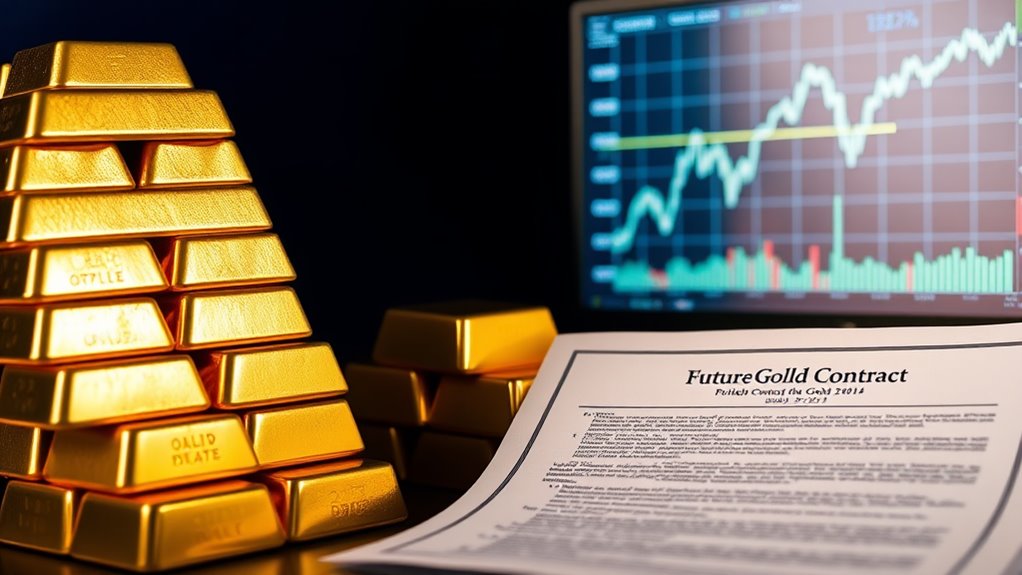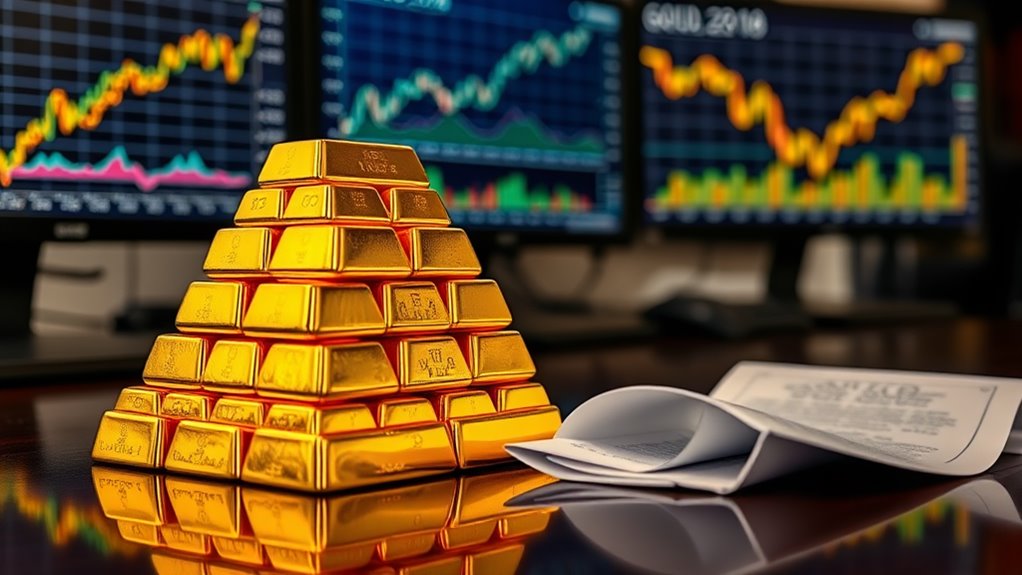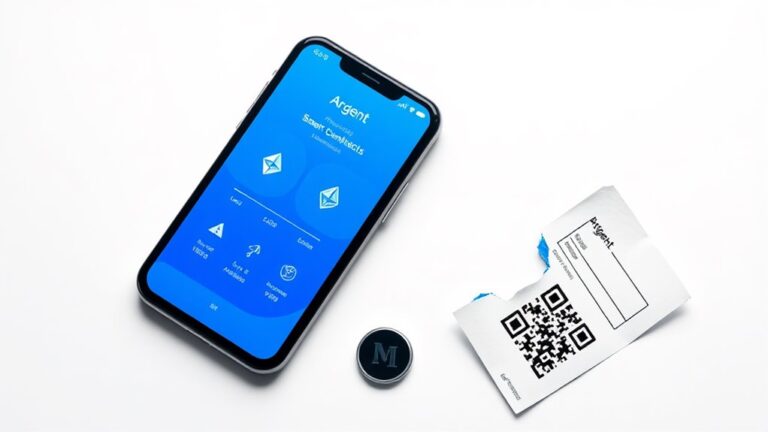Understanding Gold Futures
Note: This post may contain affiliate links, and we may earn a commission (with No additional cost for you) if you make a purchase via our link. See our disclosure for more info. The crypto world is constantly changing. This content is for informational purposes only and not financial, legal, or professional advice So, please verify the info on the cryptocurrency provider’s websites.
Gold futures are standardized contracts for trading 100 troy ounces of gold at a set price on a future date. Think of it as betting on gold prices, whether you're hedging against market risks or hoping to cash in on price swings. But beware! This market is volatile and influenced by everything from economic indicators to geopolitical events. It's a wild ride, especially with leverage making losses stack up fast. Want to know more? Stick around!

What exactly are gold futures? They're standardized contracts to buy or sell gold at a set price and date. Think of them as a bet on future gold prices. Traders can either hedge against risk or jump into the wild world of speculation. Each contract typically controls 100 troy ounces of gold—about 31 grams. These contracts get traded on exchanges like CME and ICE, with all the standardized terms you could ever want.
But here's the kicker: prices often differ from spot gold prices. Why? Financing costs and interest rates, of course.
Gold futures attract a mixed crowd. You've got miners, refiners, consumers, and those brave speculators. Hedgers—like gold producers—use futures to lock in sale prices. Meanwhile, speculators are just taking a gamble, betting on where gold prices will go. Gold suppliers buy short to lock in selling prices; consumers buy long to secure purchase prices.
Gold futures draw in a diverse crowd—from miners and refiners to daring speculators, all playing their unique game.
But beware! Market dynamics are influenced by everything from economic indicators and interest rates to geopolitical chaos. It's a rollercoaster. Margin requirements can range from 2% to a hefty 20%. Those numbers matter, especially when leverage is involved.
But let's get real—trading isn't all champagne and confetti. Margin calls can rain on your parade, forcing you to cough up more cash during price drops. Contango and backwardation? They can mess with your profitability. Additionally, futures provide leverage that allows investors to control larger positions with smaller capital, which can amplify both gains and losses.
And don't forget about hidden financing costs that can eat away at your returns over time. High volatility is fun until it's not, and when leverage kicks in, losses can stack up fast.
Gold is often seen as a safe haven during tough economic times. When the U.S. dollar is weak or inflation is gnawing at your wallet, gold can shine. Recent market trends show gold has surged over 40% since 2024, demonstrating its continued appeal as a safe-haven asset.
But it's not all sunshine and roses. The market can be opaque, and institutional traders tend to have an edge over retail investors. In the end, futures might not follow the physical gold market closely. It's a complex game, and understanding the rules is half the battle.
Frequently Asked Questions
What Are the Tax Implications of Trading Gold Futures?
When it comes to trading gold futures, the tax scene is a mixed bag. They fall under Section 1256, so 60% of gains get the long-term treatment and 40% don't.
That's way better than the 28% hit on physical gold. Plus, no wash sale rules.
You report annually, whether you're winning or losing. It's a bit of a dance, but hey, at least you're not facing that collectible tax nightmare.
How Do Geopolitical Events Affect Gold Futures Prices?
Geopolitical events? Oh, they're like a rollercoaster for gold futures.
When tensions rise—think wars or trade spats—investors run for cover, and guess what? Gold becomes the shiny lifeboat. Prices shoot up as fear grips the market.
Sanctions? They throw a wrench in global trade, making gold even more appealing.
It's a wild ride, driven by uncertainty. So yeah, conflicts and chaos turn gold into the go-to asset for nervous investors.
Can I Trade Gold Futures With a Small Budget?
Sure, trading gold futures with a small budget is totally doable.
Enter Micro Gold contracts—think of them as gold futures for the frugal. A margin of just $125 lets you control a notional value of $2,900.
But beware! Leverage can bite back. One wrong move, and you could lose big.
What Are the Risks of Investing in Gold Futures?
Investing in gold futures? Buckle up. The risks are real.
First, leverage can turn a small loss into a massive one. Ouch.
Margin calls? Just when you think you're safe, they demand more cash.
And let's not forget the volatility; gold prices swing wildly, making futures a rollercoaster ride.
Plus, if the market crashes, good luck exiting your position.
It's a wild world out there, and not everyone walks away unscathed.
How Does Seasonality Impact Gold Futures Trading?
Seasonality? Yeah, it's a big deal in gold trading. Prices jump from mid-December to February, thanks to holiday cheer and wedding bling in India.
March? Well, brace for a drop. August can surprise traders, too, with a rally.
But don't get too comfortable. External shocks and market whims can wreck those patterns. Traders need to stay sharp.
Relying solely on seasonality? Not smart. It's like betting on a one-trick pony.










